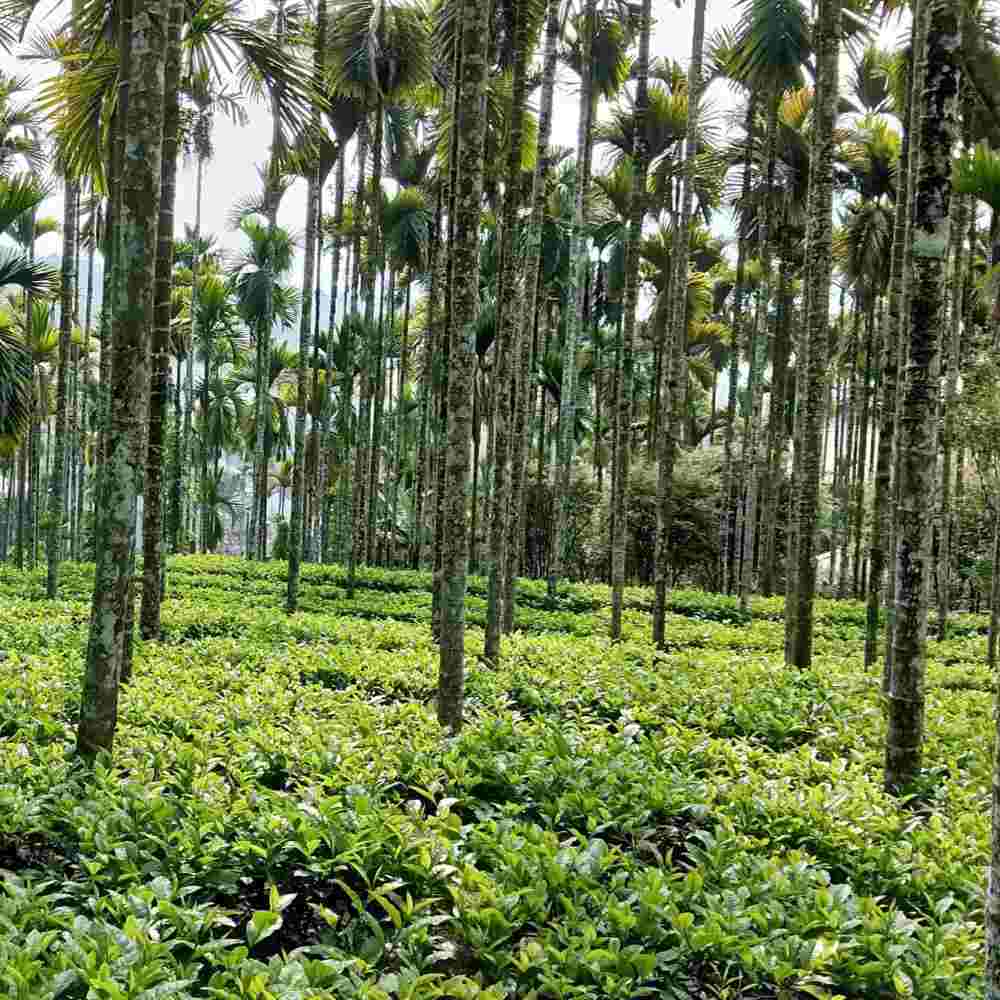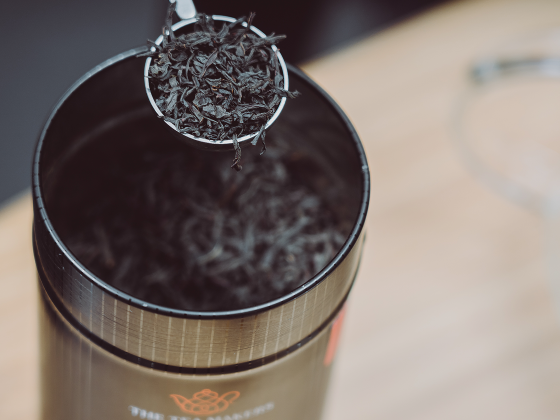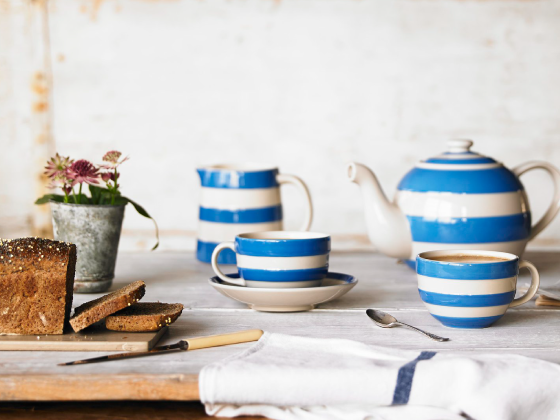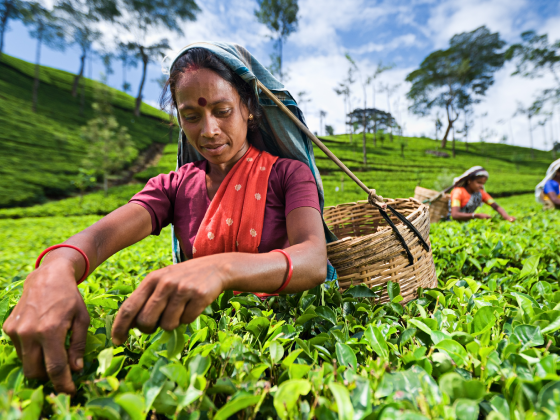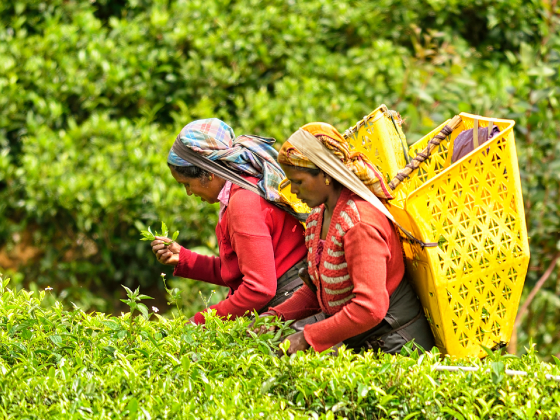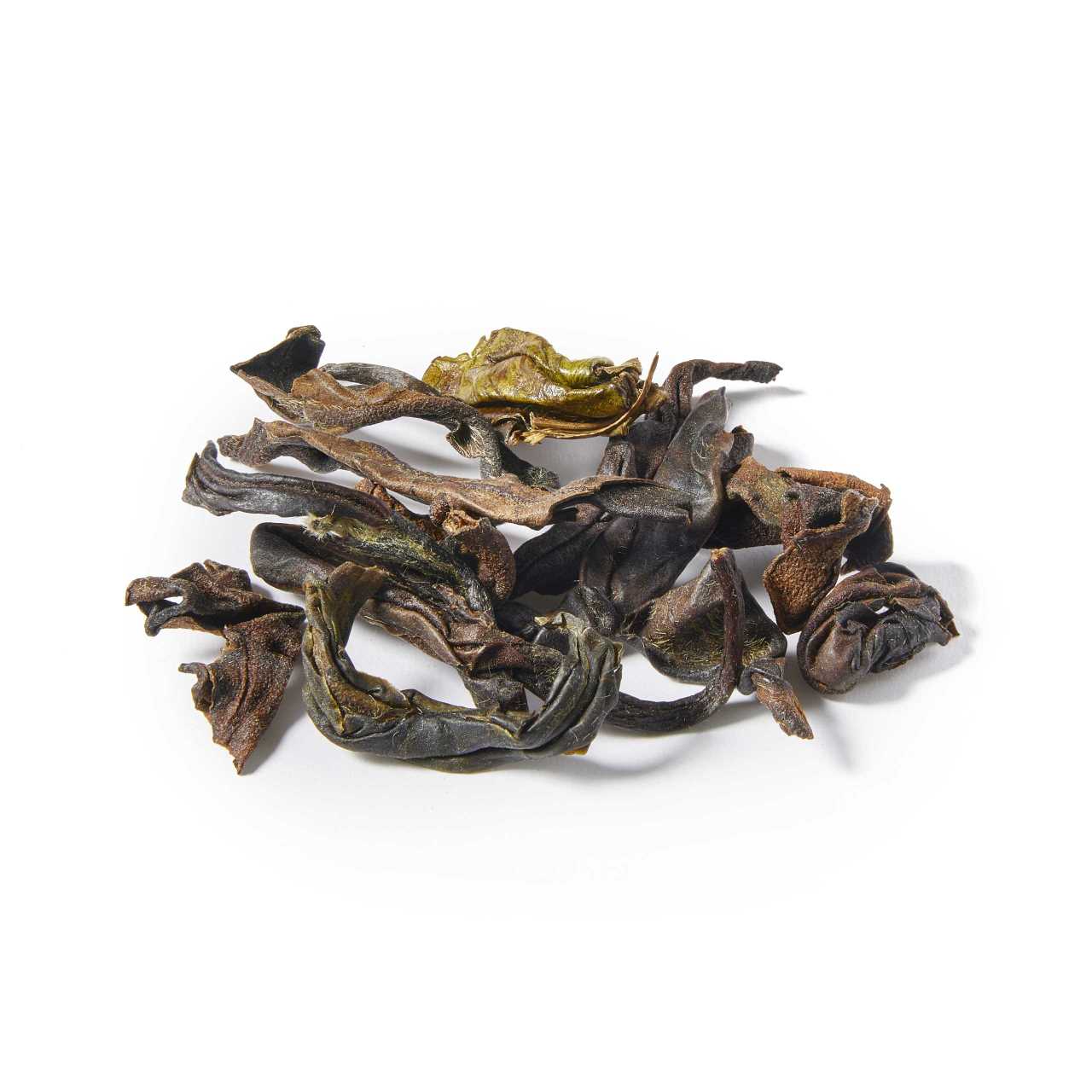
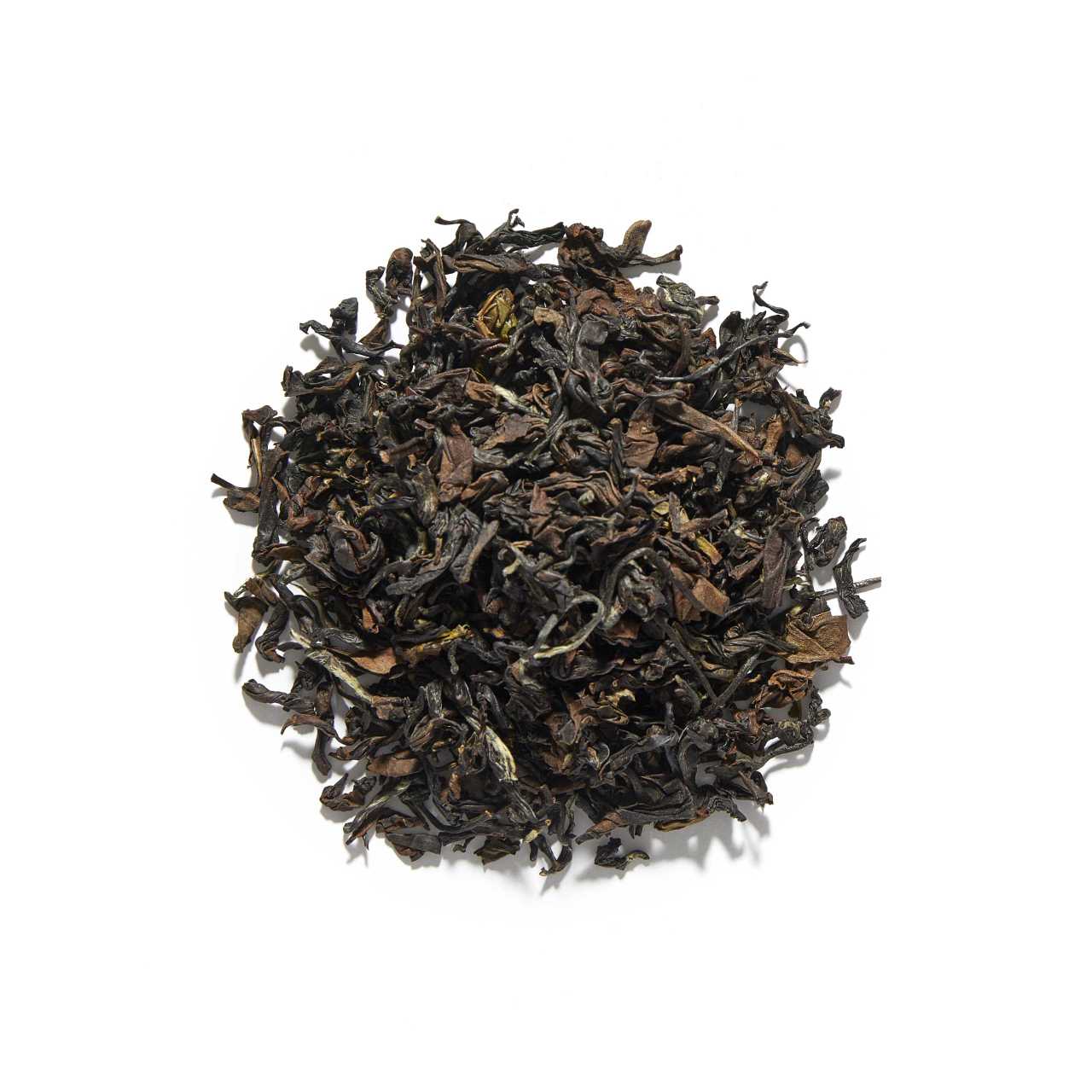
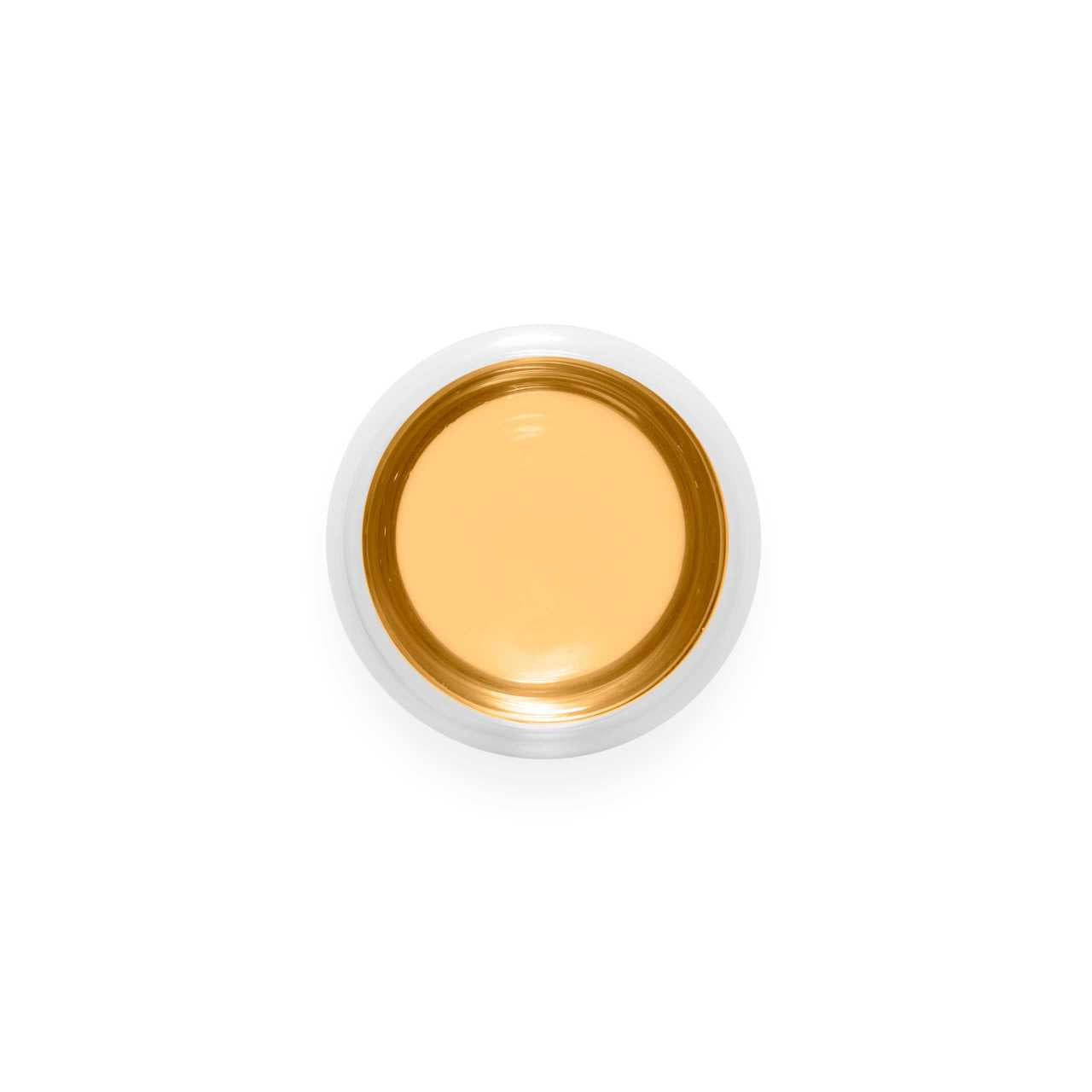
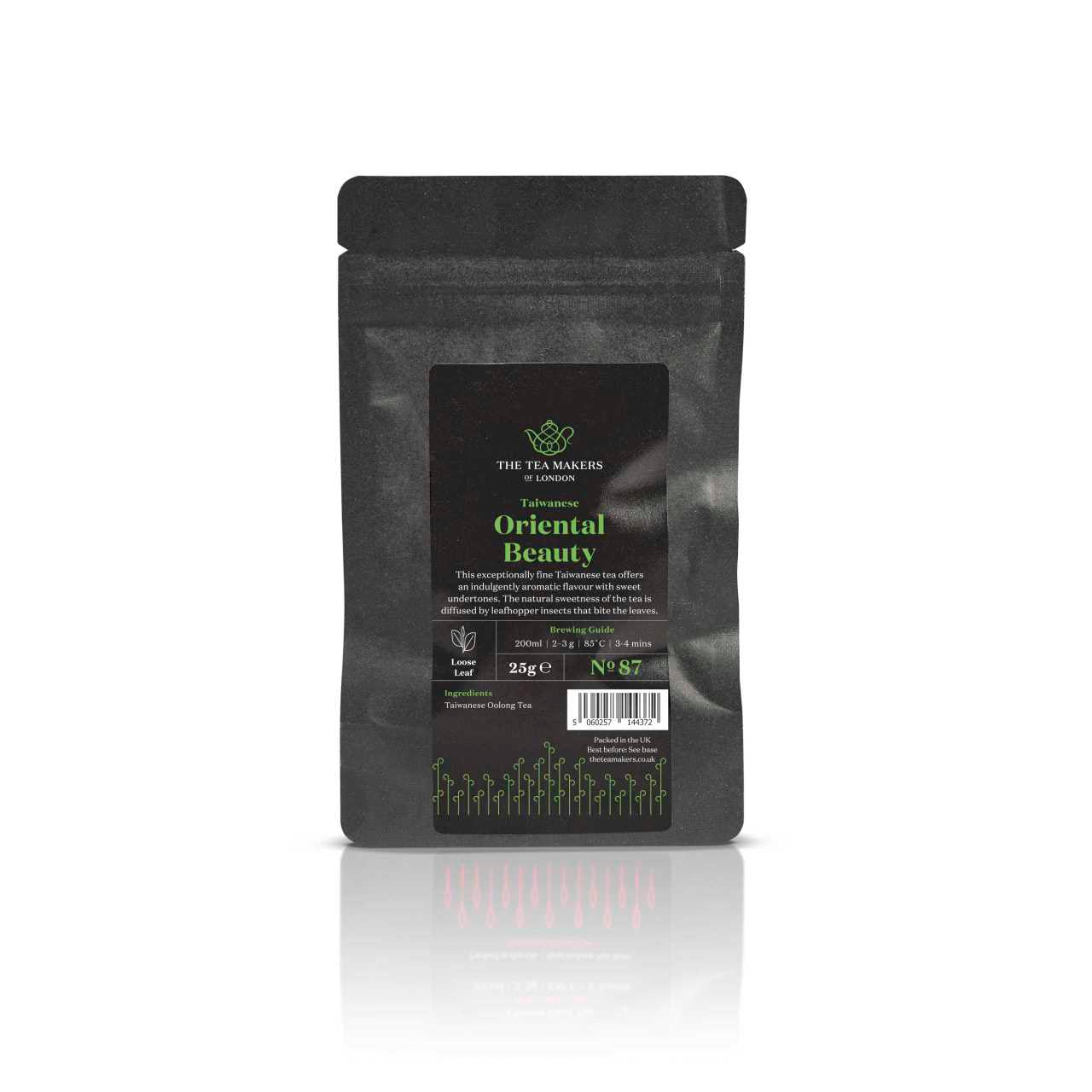
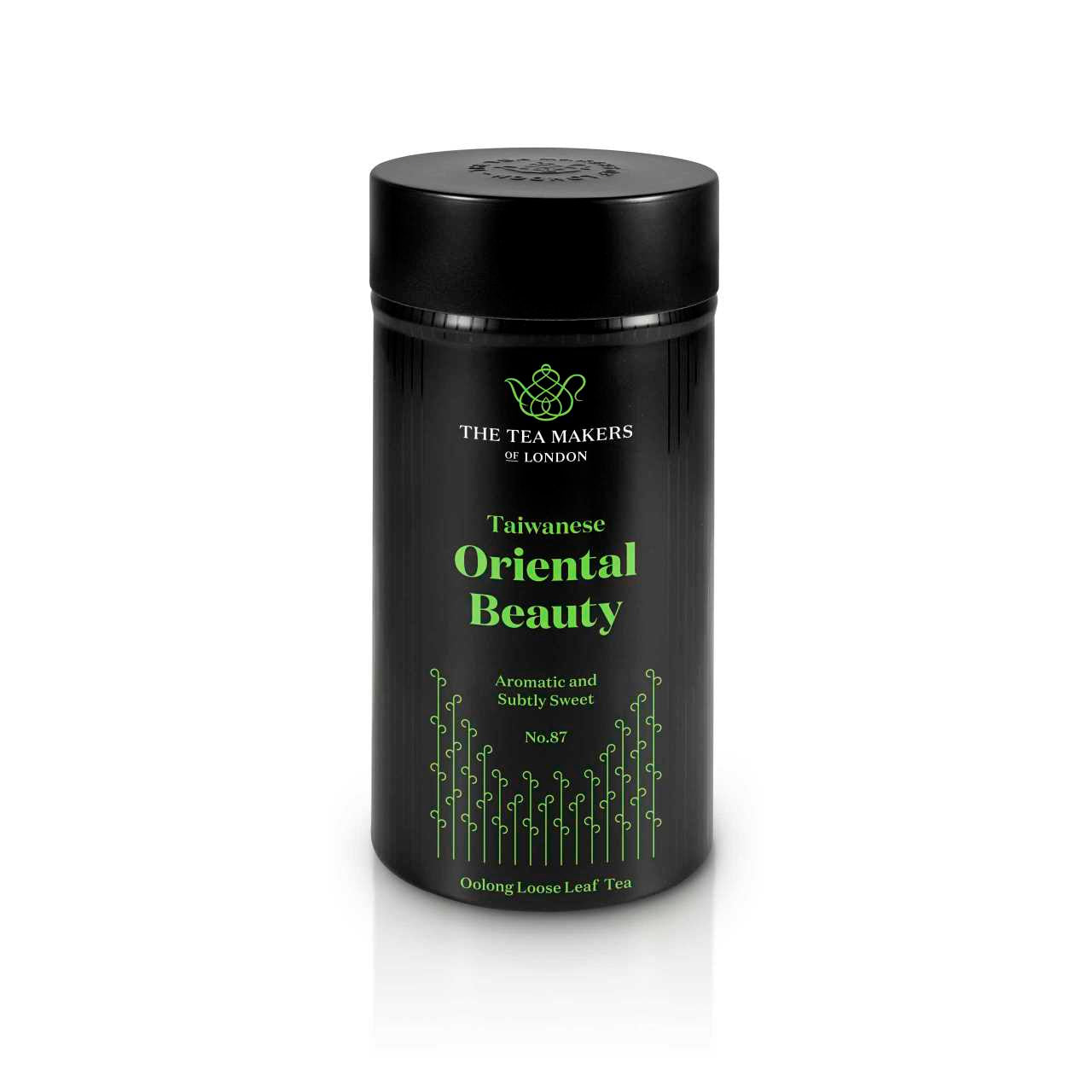
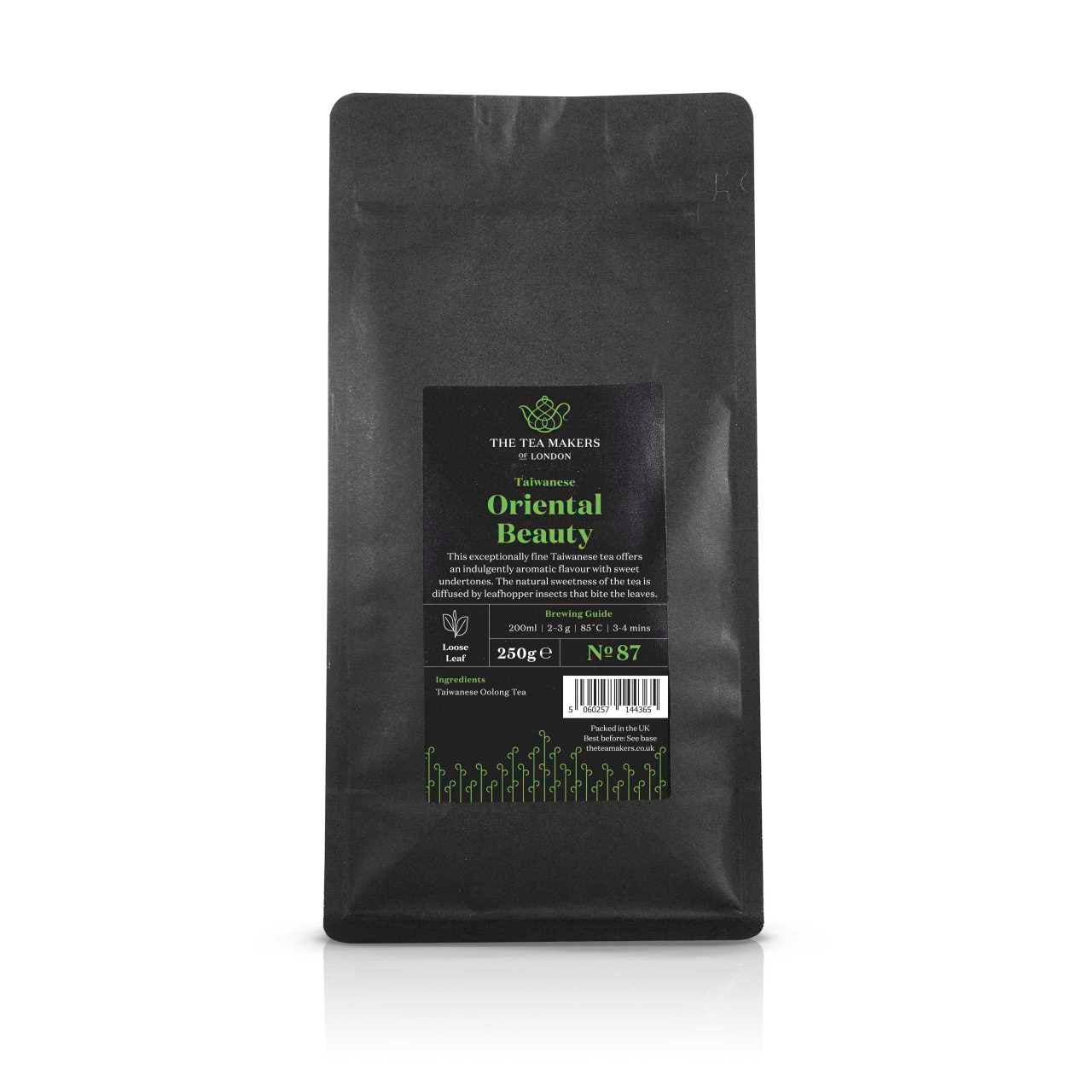
No. 87
Oriental Beauty Oolong Tea
A premium Taiwanese oolong, aromatic Oriental Beauty lives up to its name, its stunning honey-sweetness making it a delight to drink at any time of day.
Choose options
A premium Taiwanese oolong, aromatic Oriental Beauty lives up to its name, its stunning honey-sweetness making it a delight to drink at any time of day.
A premium Taiwanese oolong, aromatic Oriental Beauty lives up to its name, its stunning honey-sweetness making it a delight to drink at any time of day.
Oriental Beauty has a secret: this honey-sweet, loose-leaf oolong owes at least some of its rare charm to insects. Nibbled by tiny green leafhoppers, or tea jassids, its leaves begin to oxidise while the leaves are still on the plant, triggering the production of polyphenols and making for this superbly smooth and fruity luxury tea.
Also known as Dongfang Meiren, or Bai Hao ('white tip'), Oriental Beauty is grown in the Hsinchu County area of northern Taiwan. As its Bai Hao name suggests, it's one of the very few 'tippy' oolongs – only shoots containing one bud and two top leaves are selected for plucking. Our single-origin Oriental Beauty has been traditionally harvested in summer at the perfect point of oxidation, with the tea offering a refreshing light amber infusion and complex honey flavours with hints of dark cherry and cacao.
One look at its delicate brown leaves, twisted and streaked with silver, tells you that this Taiwanese oolong is something special. Grown at an elevation of 300m in the rolling Hsinchu hills, the tea's oxidation has been meticulously controlled by the farmer, Mr Chang, which is what makes its flavour so striking. Indulgently aromatic, its sweet undertones make it easy drinking at any time of day – although with only small quantities released each year, you'll want to order a caddy quickly!
How is Oriental Beauty grown?
A large degree of Oriental Beauty's natural sweetness is down to those aforementioned foliage-eating leafhoppers. As the summer arrives, the tiny insects (scientific name Jacobiasca formosana) arrive in the Taiwanese tea gardens where Oriental Beauty is harvested. These are generally located in warmer, humid tea-growing areas and left pesticide-free to encourage the leafhoppers to proliferate. When the insects bite the leaves, the tea bushes defend themselves by releasing terpenes – plant compounds responsible for the famed honey-like qualities of the tea.
The trick for the artisan farmers is to let the insects graze on the plants to exactly the right point: a little leaf damage equals ideal sweetness; too much and you end up with more bitterness, rather than less.
In the end, despite constant monitoring and supervision by the expert farmers, only 40-50% of the tea leaves will be usable. Hence Oriental Beauty's status as a highly sought-after and rare tea.
What are the health benefits of Oolong?
For centuries, the Chinese have touted the health benefits of oolong tea: as an aid to weight loss, cardiovascular function and improved cognition. And recent studies have shown that drinking a couple of cups of oolong per day may indeed help break down fat while you're sleeping due to the tea's metabolism-boosting capabilities, therefore reducing the risk of type 2 diabetes. Those capabilities are down to the tea's high levels of polyphenols, the antioxidant-packed plant-based compounds that are also linked to a decrease in cell division in certain cancers, improved bone mineral density and a reduction in certain skin conditions such as eczema.
How to brew Oriental Beauty
Oriental Beauty is a speciality tea that requires a slightly different approach to brewing than other oolongs. We recommend boiling the water up to 80-90C and steeping the leaves for three to four minutes. Our Oriental Beauty is suitable for two re-steepings, but we suggest keeping the wet leaves in a pot without water for the second serving, to avoid over-brewing.
The best teapots to use for this tea are porcelain or glass – unlike other oolongs, the use of a clay pot such as a Yixing may detract from Oriental Beauty's finely balanced flavour and integrity.
Alternatives to Oriental Beauty tea
If you're looking for an everyday option in an oolong, you can't go past our Four Seasons Taiwanese tea – earthy-sweet, with a mild, nutty character, it's an easy way to get your fix. And if you want evidence of just how diverse oolongs can be, head across the Taiwan Strait to the Chinese province of Fujian. The iconic, floral Tie Guan Yin, also known as Iron Goddess of Mercy is an outstandingly light green and creamy oolong.
For the full range of The Tea Makers of London oolongs, browse our Tea Shop. Upgrade your brewing game with our range of gaiwans and glassware – perfect for preparing your Oriental Beauty in style. Alternatively, our stunning Rare and Limited Gong Fu tea ceremony set makes a great gift for tea connoisseurs.
This tea offers a floral and fragrant woody aroma and dark orange infusion. A refined cup with cherry and spice notes and honey sweet mouthfeel.
Pure Taiwanese oolong tea
